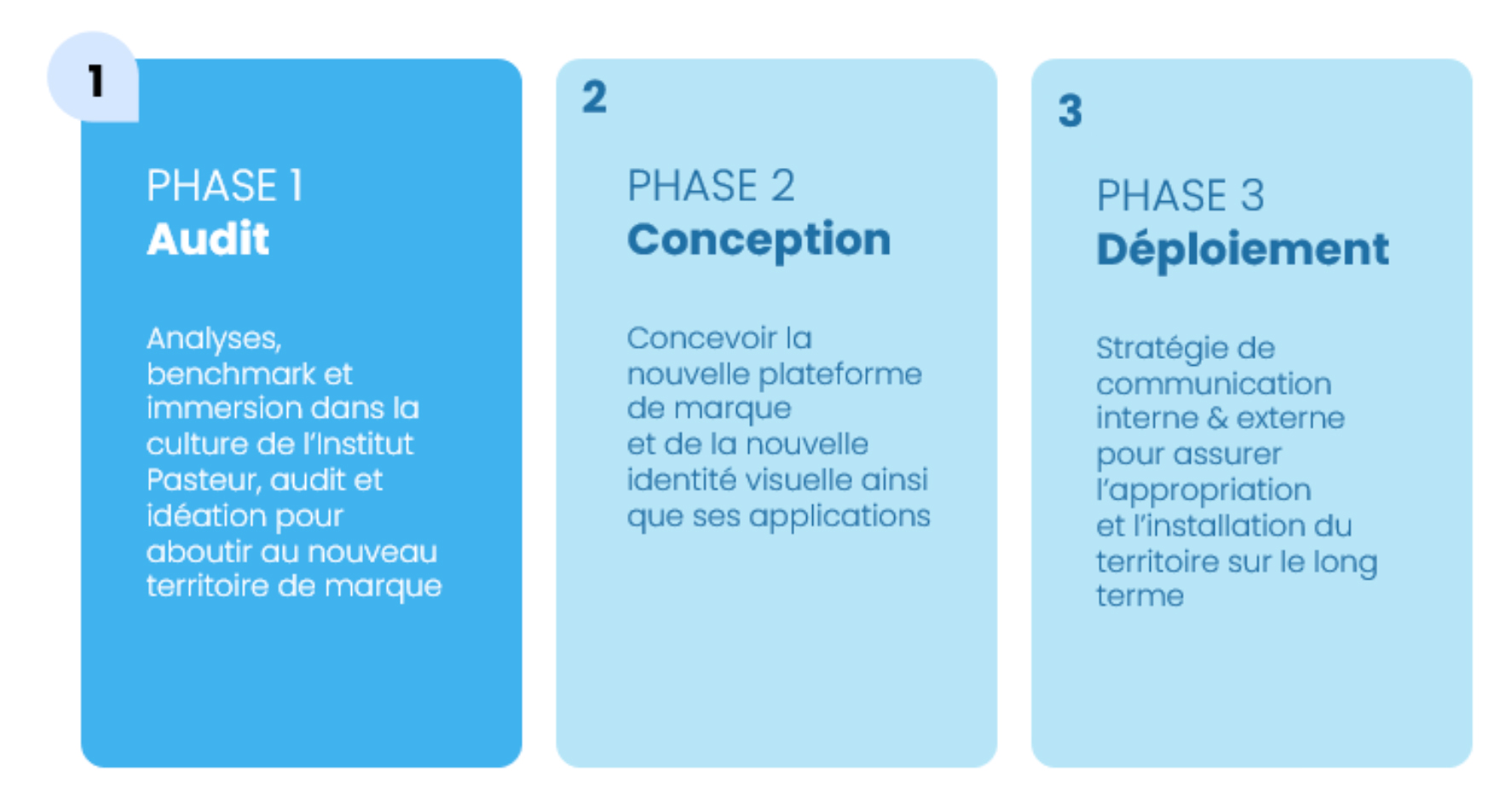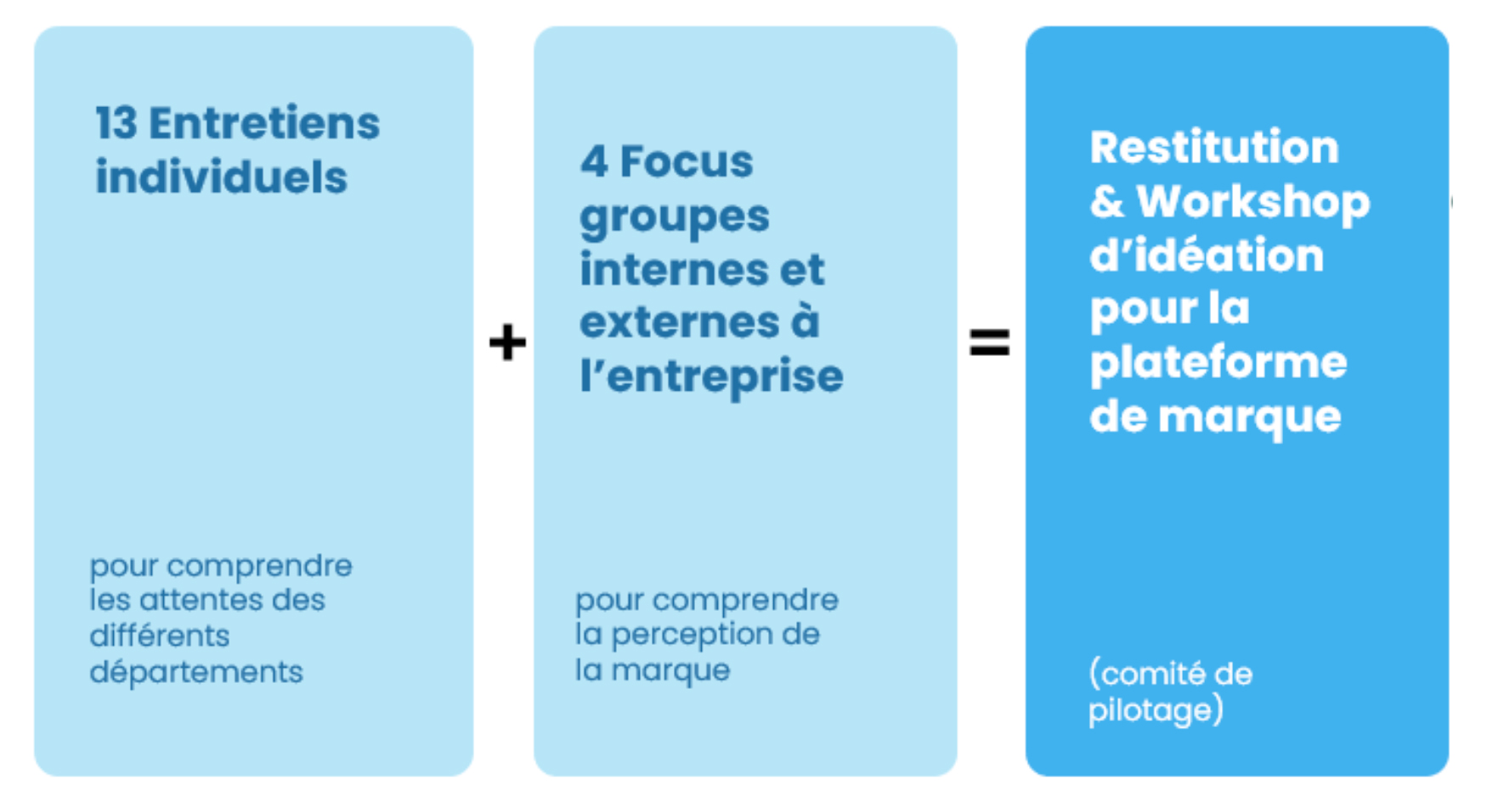
 COMMUNICATION
COMMUNICATION
Decoding, expressing and conveying the Institut Pasteur's DNA: new project to develop the Institut Pasteur's brand platform
In connection with the Pasteur 2030 Strategic Plan and in light of the brand challenges facing the Institut Pasteur today, the Department of Communications and Public Affairs has embarked on a major project to redefine, clarify and implement the fundamentals of the Institut Pasteur brand and the Pasteurian identity. This project, which follows on from your feedback to the online consultation launched last February, is a collaborative effort involving the Pasteur community and the general public.
- Why does the Institut Pasteur need a brand strategy?
An organization's brand represents its core identity, the impression it wants to leave on its audiences, and the visible expression of its strategy. An organization's brand strategy is all the measures taken to ensure that the image projected to its external and internal audiences is in line with the actual identity of the organization; that this image has the strongest possible impact on its audiences in light of the context and changing esthetic standards; and finally that the image reflects the key values and strategic priorities of the organization at a given moment in its history.
The Institut Pasteur has identified a number of specific challenges associated with its brand:
• Understanding: a complex organization, multiple missions that are not clearly represented, ambiguous public/private status, an industrial image that does not reflect reality, a lack of clarity regarding its role in society;
• Impact and visibility: a highly technical, academic image, lack of openness to society, failure to recognize the importance of professional branding, only one brand campaign with limited resources (Pasteurdon);
• Modernity: weight of the Pasteur legacy, formal and esthetic standards that need updating, mostly text-based formats and content; a young, diverse, multicultural workforce that needs to be showcased more effectively;
• Internal cohesion: few visible signs of the Institut Pasteur's identity within the organization, erratic use of the logo, lack of consistency in external communication materials, a sense of belonging based on conceptual rather than physical aspects.
In response to these challenges, the department is implementing an action plan to develop the following aspects:
• The brand strategy, to establish a clear, effective position for the brand, with a central narrative for all activities and communications and a conceptual and visual basis to inspire future Institut Pasteur brand campaigns, especially Pasteurdon;
• The brand identity, to modernize the brand image, make it more appealing in today's world and make sure it clearly expresses the Institut Pasteur's current role in society with maximum impact.
- What is a brand platform?
A brand platform provides a concise expression of the identity of a brand. It is generally a reference document that encapsulates the spirit of the organization and sums up its fundamentals: its vision, mission, values, personality traits, etc. The establishment of the brand platform will serve several purposes:
• it will serve as a reference for the development of communication strategies and communication campaigns carried out externally and within the organization;
• it will raise awareness of the brand identity among staff, encouraging them to take the brand on board and adopt it in full;
• it will be the basis of the brand strategy and can inspire more specific measures related to the Institut Pasteur's visual identity, logo and campaigns.
 Focus on the project to develop the Institut Pasteur's new brand platform
Focus on the project to develop the Institut Pasteur's new brand platform
To launch the process, the Department of Communications and Public Affairs decided to draw on the expertise of two sister agencies that specialize in brand communication: The Good Design, an agency specializing in brand strategy and design, and The Good Company, an all-round communications agency.
- A project developed in collaboration with Institut Pasteur staff and the general public
The project will involve as many staff as possible via a collaborative approach, with representatives from all the Institut Pasteur entities. The aim is to engage all stakeholders in the process to make sure the strategy is relevant and to maximize uptake and implementation of results. The process will also involve external input, with the use of focus groups open to the general public.
- A three-stage method

The first stage, an audit of the existing brand, has been under way since the beginning of April. This involves 13 individual interviews to gage the expectations of each department, followed by the establishment of four internal and external focus groups to find out how the brand is perceived. The aim is to provide feedback on the results relatively soon, and also to launch a brainstorming workshop on the brand platform.

Keep an eye on the BIP for the latest news on the project.